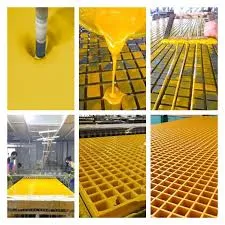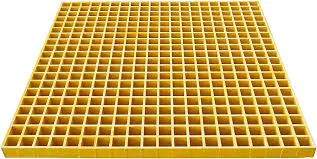
-
 Afrikaans
Afrikaans -
 Albanian
Albanian -
 Amharic
Amharic -
 Arabic
Arabic -
 Armenian
Armenian -
 Azerbaijani
Azerbaijani -
 Basque
Basque -
 Belarusian
Belarusian -
 Bengali
Bengali -
 Bosnian
Bosnian -
 Bulgarian
Bulgarian -
 Catalan
Catalan -
 Cebuano
Cebuano -
 China
China -
 China (Taiwan)
China (Taiwan) -
 Corsican
Corsican -
 Croatian
Croatian -
 Czech
Czech -
 Danish
Danish -
 Dutch
Dutch -
 English
English -
 Esperanto
Esperanto -
 Estonian
Estonian -
 Finnish
Finnish -
 French
French -
 Frisian
Frisian -
 Galician
Galician -
 Georgian
Georgian -
 German
German -
 Greek
Greek -
 Gujarati
Gujarati -
 Haitian Creole
Haitian Creole -
 hausa
hausa -
 hawaiian
hawaiian -
 Hebrew
Hebrew -
 Hindi
Hindi -
 Miao
Miao -
 Hungarian
Hungarian -
 Icelandic
Icelandic -
 igbo
igbo -
 Indonesian
Indonesian -
 irish
irish -
 Italian
Italian -
 Japanese
Japanese -
 Javanese
Javanese -
 Kannada
Kannada -
 kazakh
kazakh -
 Khmer
Khmer -
 Rwandese
Rwandese -
 Korean
Korean -
 Kurdish
Kurdish -
 Kyrgyz
Kyrgyz -
 Lao
Lao -
 Latin
Latin -
 Latvian
Latvian -
 Lithuanian
Lithuanian -
 Luxembourgish
Luxembourgish -
 Macedonian
Macedonian -
 Malgashi
Malgashi -
 Malay
Malay -
 Malayalam
Malayalam -
 Maltese
Maltese -
 Maori
Maori -
 Marathi
Marathi -
 Mongolian
Mongolian -
 Myanmar
Myanmar -
 Nepali
Nepali -
 Norwegian
Norwegian -
 Norwegian
Norwegian -
 Occitan
Occitan -
 Pashto
Pashto -
 Persian
Persian -
 Polish
Polish -
 Portuguese
Portuguese -
 Punjabi
Punjabi -
 Romanian
Romanian -
 Russian
Russian -
 Samoan
Samoan -
 Scottish Gaelic
Scottish Gaelic -
 Serbian
Serbian -
 Sesotho
Sesotho -
 Shona
Shona -
 Sindhi
Sindhi -
 Sinhala
Sinhala -
 Slovak
Slovak -
 Slovenian
Slovenian -
 Somali
Somali -
 Spanish
Spanish -
 Sundanese
Sundanese -
 Swahili
Swahili -
 Swedish
Swedish -
 Tagalog
Tagalog -
 Tajik
Tajik -
 Tamil
Tamil -
 Tatar
Tatar -
 Telugu
Telugu -
 Thai
Thai -
 Turkish
Turkish -
 Turkmen
Turkmen -
 Ukrainian
Ukrainian -
 Urdu
Urdu -
 Uighur
Uighur -
 Uzbek
Uzbek -
 Vietnamese
Vietnamese -
 Welsh
Welsh -
 Bantu
Bantu -
 Yiddish
Yiddish -
 Yoruba
Yoruba -
 Zulu
Zulu
Feb . 05, 2025 05:10
Back to list
Other Products
Fiberglass Reinforced Plastic (FRP) pipes have revolutionized the industry by offering a unique blend of durability, versatility, and cost-effectiveness. Emerging as a robust alternative to traditional piping systems, especially in environments demanding high corrosion resistance and strength, the adoption of FRP pipes is becoming increasingly prevalent across various sectors.
The authority of FRP pipe systems in infrastructure development is increasingly recognized by industry leaders and regulatory bodies. Standardization has been a significant milestone, with numerous international standards now defining quality and performance benchmarks, ensuring consistency and reliability. Such authoritative protocols solidify the trust industries place in FRP pipes, driving their widespread acceptance and use. Credibility also stems from the evolving technological advancements in FRP pipe manufacturing. Continuous research and development have led to innovations that enhance performance while addressing environmental and safety concerns. Advanced techniques such as filament winding and centrifugal casting are employed to produce pipes with impeccable structural integrity and durability. Incorporating fiberglass reinforced plastic pipes into large-scale projects requires a partnership with reputable manufacturers and suppliers. Selecting sources that adhere to strict quality control and certification processes is paramount in ensuring that the end product meets both regulatory standards and client expectations. As a testament to their trustworthiness, top-tier FRP pipe providers often furnish comprehensive warranties, dedicated customer support, and training for installation and maintenance processes, offering reassurance that any issues will be swiftly and effectively addressed. In conclusion, fiberglass reinforced plastic pipes represent a prime choice for industries seeking a reliable, adaptable, and cost-efficient solution for their piping needs. As technology continues to evolve, the capabilities and applications of FRP pipes are set to expand even further. Their proven long-term performance, coupled with their low environmental impact and resilience in harsh conditions, ensures that they remain at the forefront of material selection in infrastructure and industrial development.


The authority of FRP pipe systems in infrastructure development is increasingly recognized by industry leaders and regulatory bodies. Standardization has been a significant milestone, with numerous international standards now defining quality and performance benchmarks, ensuring consistency and reliability. Such authoritative protocols solidify the trust industries place in FRP pipes, driving their widespread acceptance and use. Credibility also stems from the evolving technological advancements in FRP pipe manufacturing. Continuous research and development have led to innovations that enhance performance while addressing environmental and safety concerns. Advanced techniques such as filament winding and centrifugal casting are employed to produce pipes with impeccable structural integrity and durability. Incorporating fiberglass reinforced plastic pipes into large-scale projects requires a partnership with reputable manufacturers and suppliers. Selecting sources that adhere to strict quality control and certification processes is paramount in ensuring that the end product meets both regulatory standards and client expectations. As a testament to their trustworthiness, top-tier FRP pipe providers often furnish comprehensive warranties, dedicated customer support, and training for installation and maintenance processes, offering reassurance that any issues will be swiftly and effectively addressed. In conclusion, fiberglass reinforced plastic pipes represent a prime choice for industries seeking a reliable, adaptable, and cost-efficient solution for their piping needs. As technology continues to evolve, the capabilities and applications of FRP pipes are set to expand even further. Their proven long-term performance, coupled with their low environmental impact and resilience in harsh conditions, ensures that they remain at the forefront of material selection in infrastructure and industrial development.
Next:
Related Products









